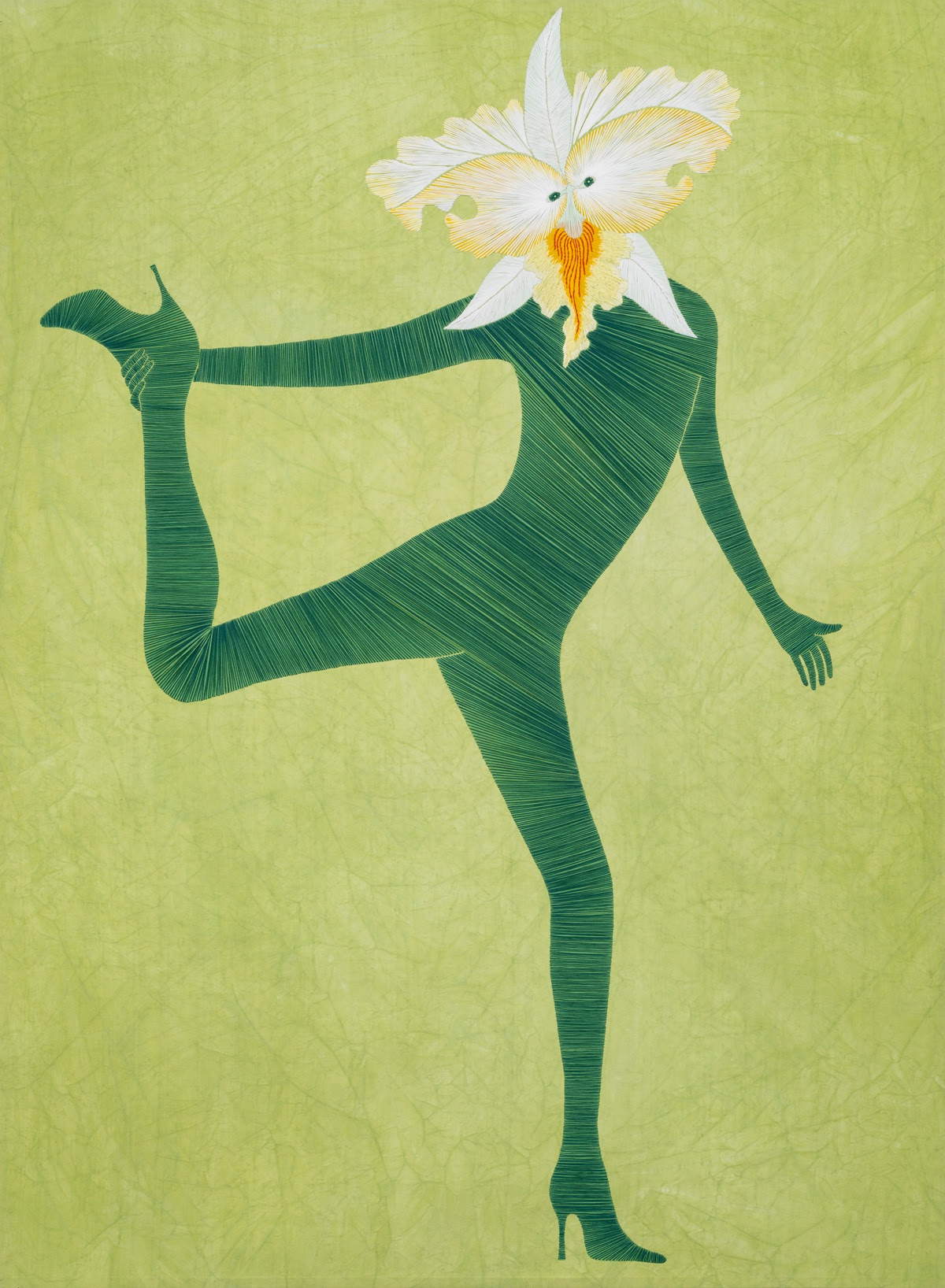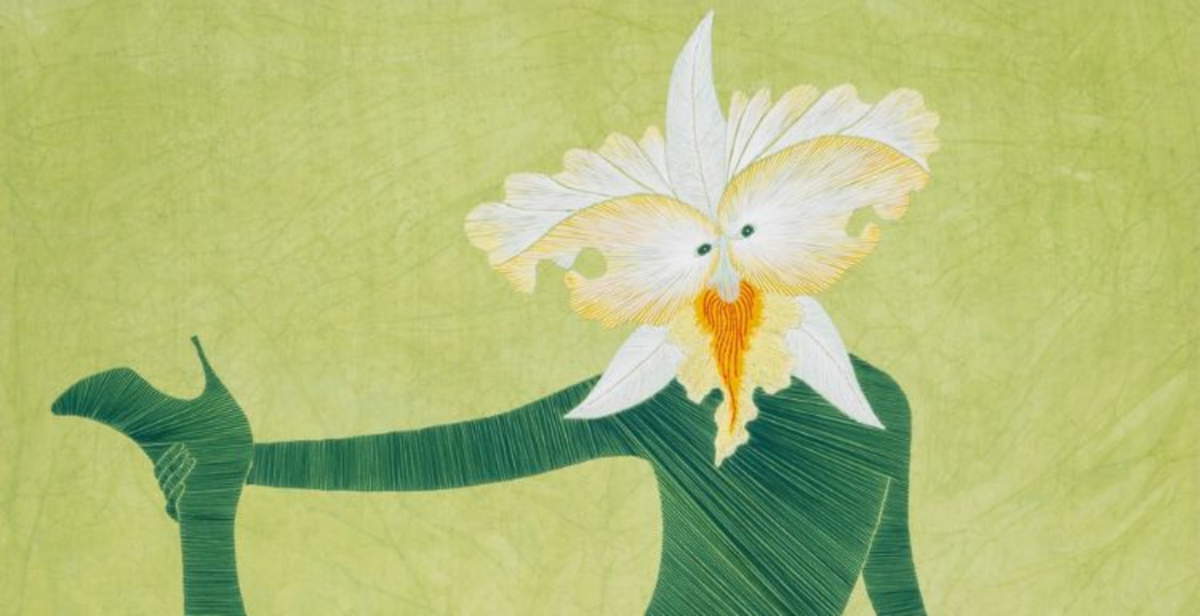From Oct. 30, 2025, to March 22, 2026, the Castello di Rivoli Museo d’Arte Contemporanea in Turin will host Domani torno, an extensive retrospective devoted to Enrico David (Ancona, Italy, 1966), a London resident since 1986. Curated by Marianna Vecellio and designed for the Manica Lunga, the exhibition traces the artist’s entire oeuvre through a path that embraces painting, sculpture, textile works, drawing and environmental installations.
David’s research focuses on the representation of the human figure as a space of transformation, language and reflection, in an ongoing dialogue between figuration and abstraction. The works on display document a practice that traverses different media and has progressively taken on a personal and visionary edge. The exhibition layout, designed specifically for the museum spaces, integrates scenic elements and display solutions inspired by design and theater, with a marked focus on the body and face as narrative and relational devices.
“In a time dominated by artificial intelligence and digital dematerialization, Enrico David’s work represents a statement of resistance to decoding and a hymn to the physical body, sensitive experience and the power of imagination,” says curator Marianna Vecellio.
“Creativity is for me an opportunity to change the circumstances of pain,” says David, “a redemption, a destination other than being sick. Art is what makes reality more livable. In my work, gender has a kind of unconscious irrelevance, identities brush against each other, exchange, question each other. The space of the dream and the space of drawing are infinite.”

Tomorrow I Come Back unfolds as a personal and artistic narrative, beginning with David’s Marche origins and following his move to London in the 1980s, a founding moment for a visual practice oriented toward the construction of an existential language. The title of the exhibition suggests an imaginative return, an exploration of inner places in constant mutation. Drawing plays a central role in the artist’s path in a particular way as an element capable of connecting different languages and holding together the various areas of his production. Some works, in particular, arise from the need to process traumatic events, such as the sudden loss of his father, an event that has deeply affected David’s imagination.
Since the late 1990s, David’s installations have turned into complex environments, veritable miniature worlds in which the emotional dimension is intertwined with chronicle, memory, popular culture and theatrical rhetoric. Works such as Madreperlage (2003), Absuction Cardigan (2009) and Ultra Paste (2007) reflect the transition to expressive forms in which narrative is fragmented into scenic elements charged with symbolic tension.
Over time, David’s work evolves toward greater formal synthesis, with an increasing focus on sculpture. The face, in particular, becomes a focal point of his reflection: a plastic and metaphorical surface, a space of relationship, memory and knowledge. Beginning with the exhibition Life Sentences (2014), the artist deepens the theme of physiognomic representation through hyper-expressive rendering, modeling faces in wax to accentuate their emotional and material component.

Works included in the retrospective include Trenches to Reason (2021), in which two suspended forms evoke a fusion of geology and technology, and Tutto il Resto Spegnere, presented at the Italian Pavilion of the Venice Biennale in 2019. The exhibition also includes sculpture studies developed in previous years, including Sign for Lost Mountaineers Hair Grooming Station (2004), Pebble Lady (2014) and Racket II (2017), alongside a substantial core of drawings and a selection of recent works, including large paintings, tapestries and embroideries on canvas. A special role is reserved for the series of small theaters, created by the artist since 2005. The works, conceived as small scenes or visual devices, help define the fragmented and layered imagery that characterizes David’s production, based on the interaction between form, language and matter.
The exhibition will also be an opportunity to present for the first time in Italy Untitled, 2024-2025, a work produced by Castello di Rivoli in collaboration with Kunsthaus Zürich. The project was supported by the General Directorate for Contemporary Creativity of the Ministry of Culture as part of the Italian Council 2025 program. The work reflects the artist’s recent commitment to experimental and mature sculpture, focusing on material transformation and the investigation of form. To complement the exhibition, a bilingual (Italian and English) catalog edited by Walther König will be published. The publication will include previously unpublished essays and interviews signed by curator Marianna Vecellio, museum director Francesco Manacorda, philosopher Federico Campagna, and art historians Dawn Adesand Patricia Staple.
 |
| Enrico David at Castello di Rivoli: a retrospective on identity in constant transformation |
Warning: the translation into English of the original Italian article was created using automatic tools. We undertake to review all articles, but we do not guarantee the total absence of inaccuracies in the translation due to the program. You can find the original by clicking on the ITA button. If you find any mistake,please contact us.